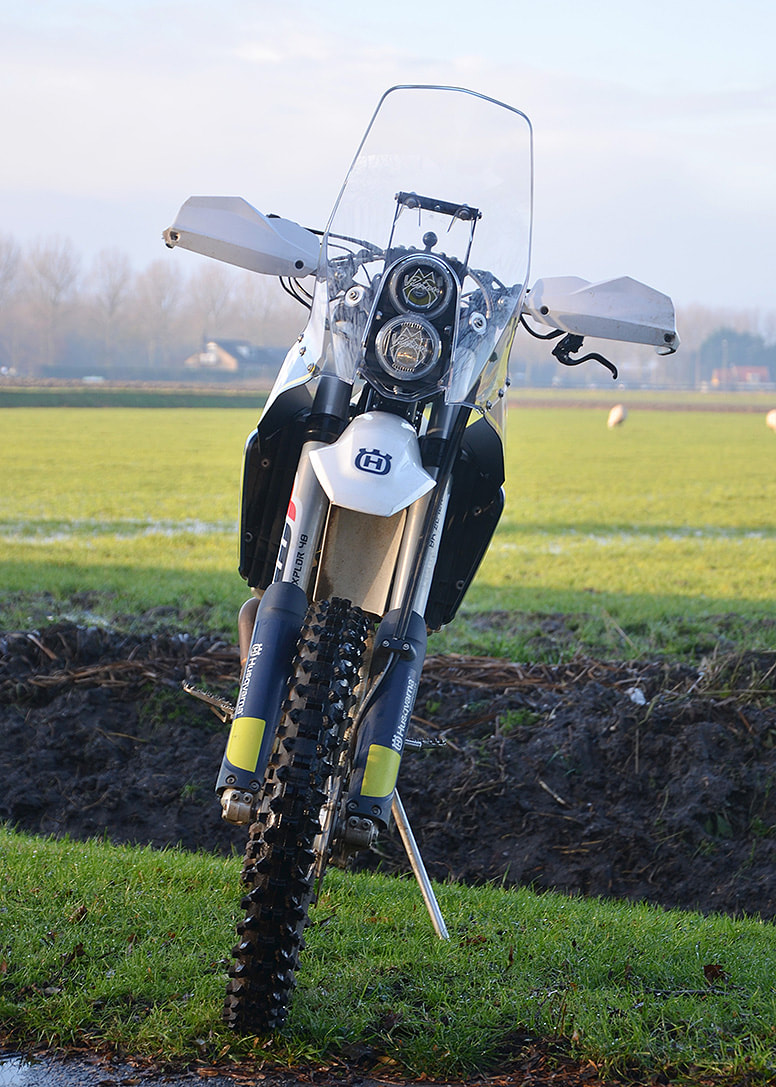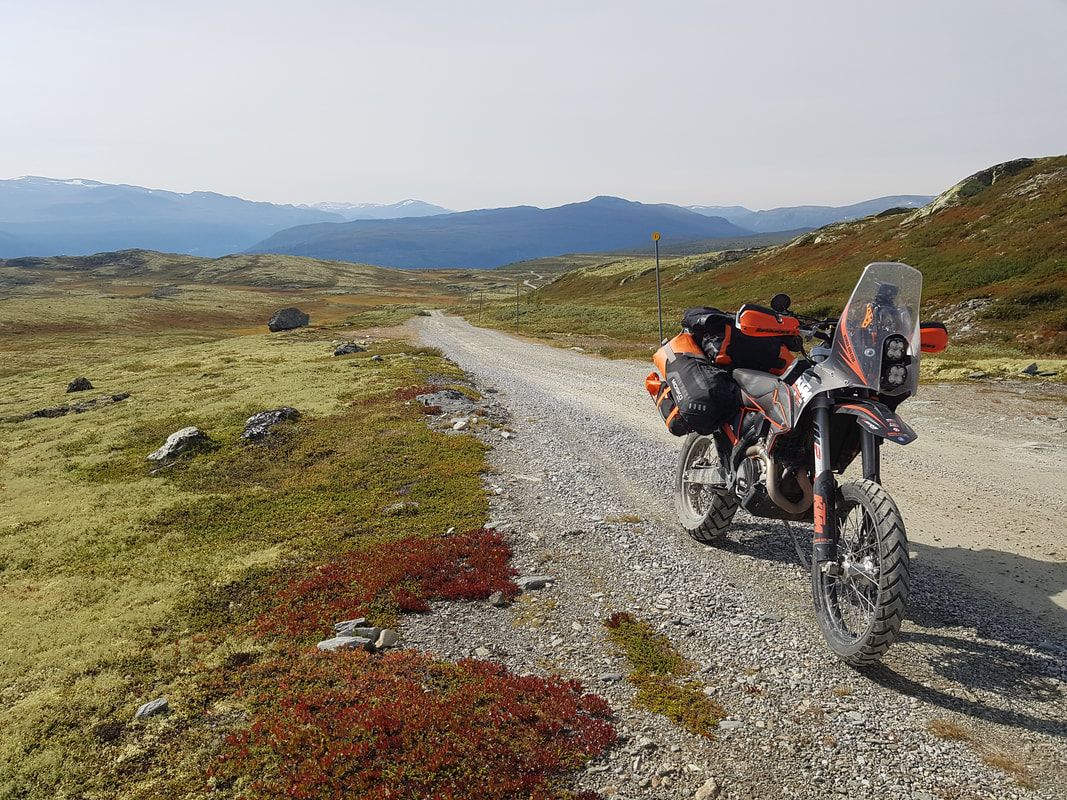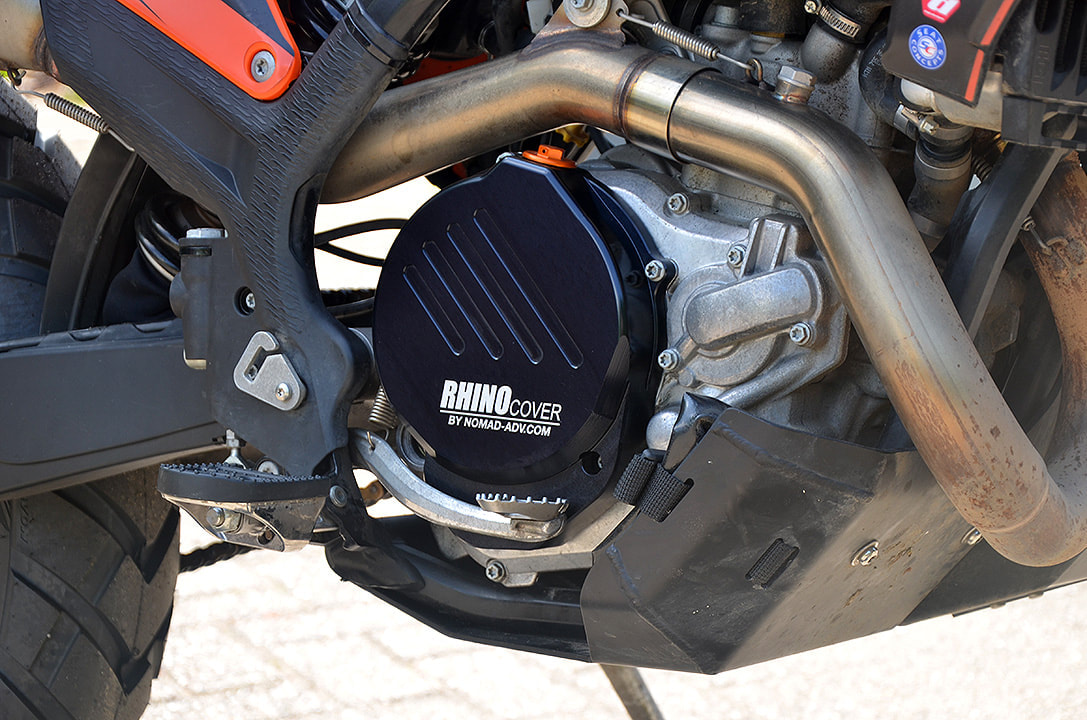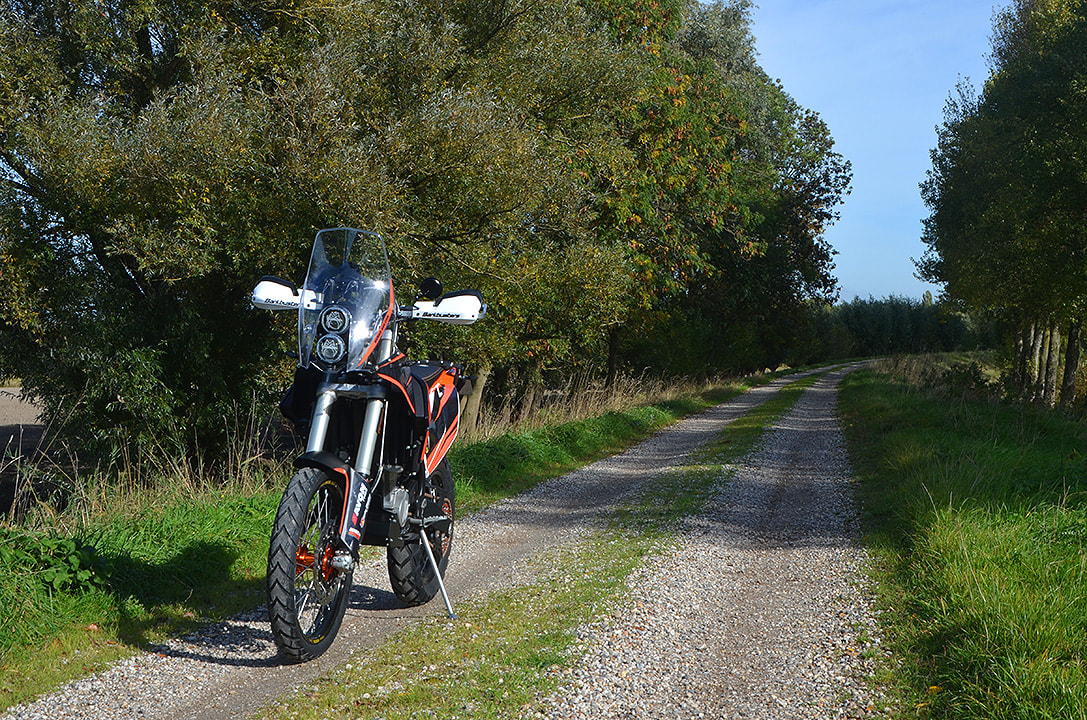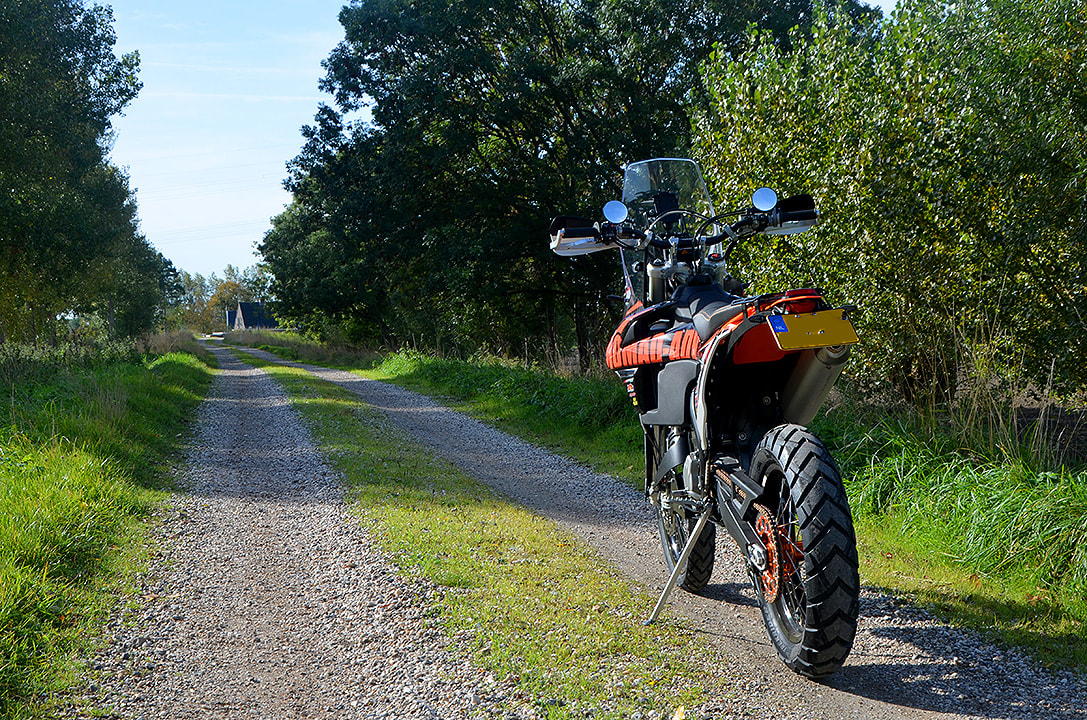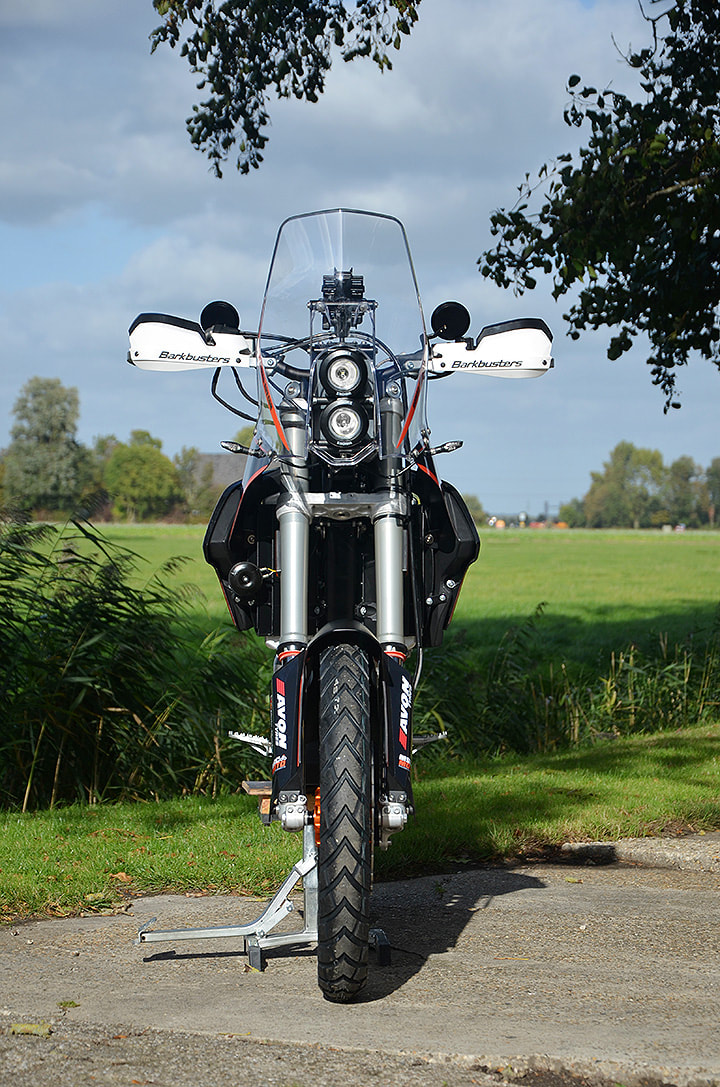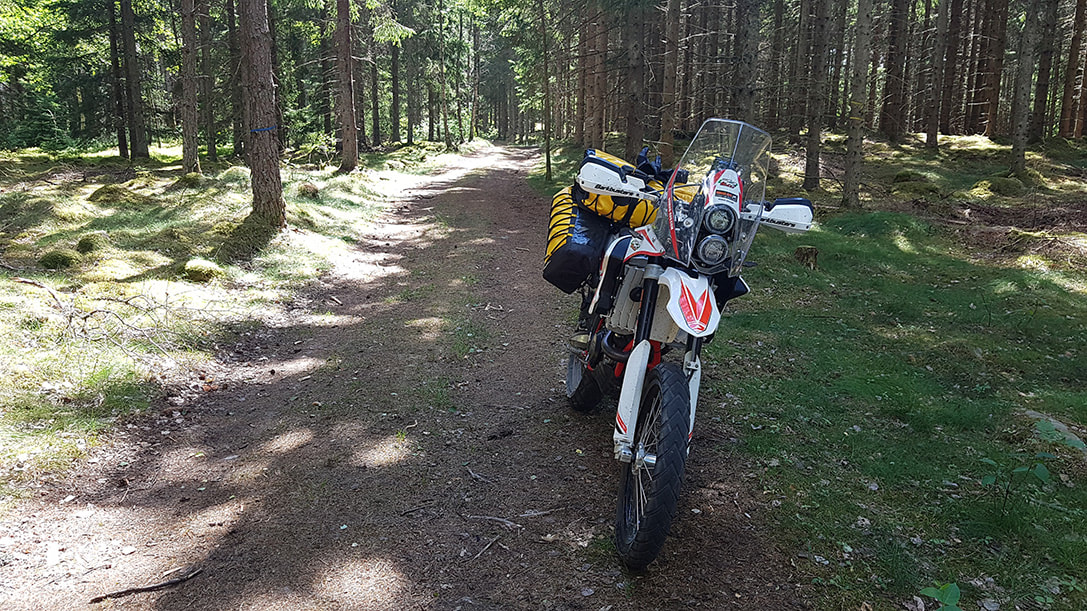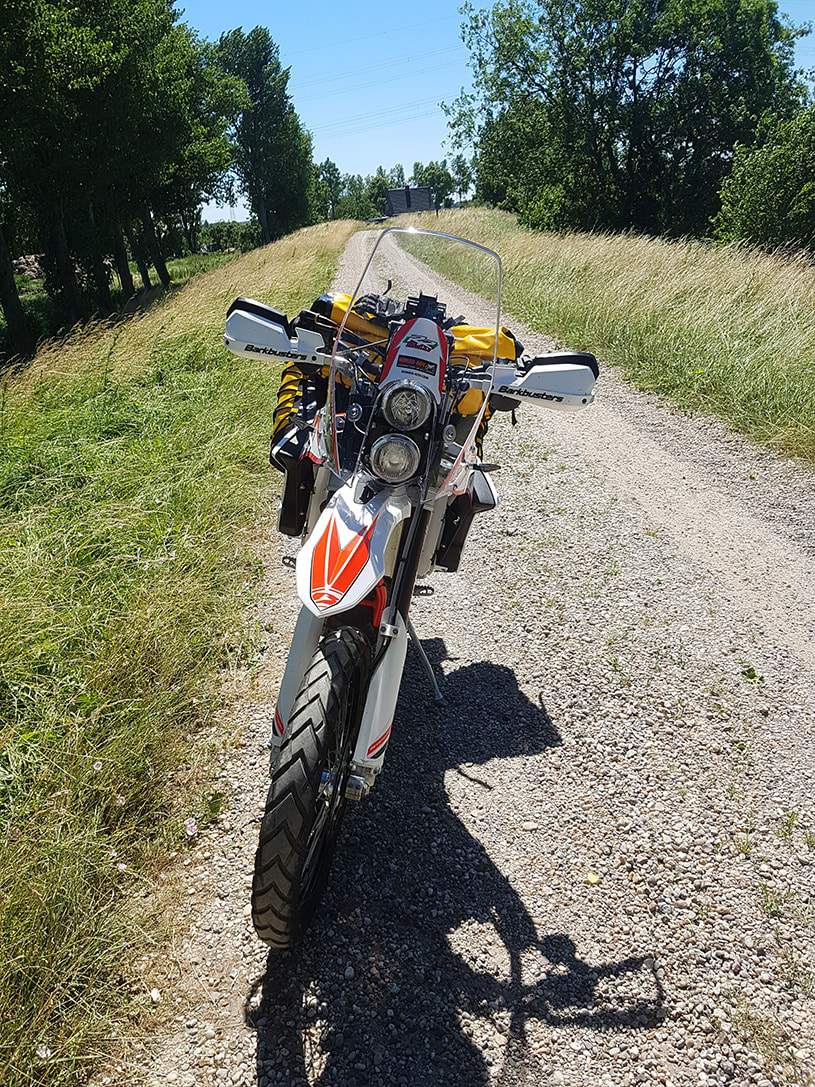Enduro engine longevity |
Header photo by Christopher Selby Smith (701 Husky)
|
While we all love the simplicity, power and easy serviceability of an enduro engine, some 'experts' have openly claimed that they don't go the distance. These claims are usually made by people who have no experience at all in using an enduro as a travel bike, let alone use one to cover big distances that way and yet pretend to know everything about them... They vindicate their opinion by quoting manufacturers' recommendations for servicing and rebuilds, conveniently forgetting that these recommendations are based on using the bike in a racing environment.
|
This section mainly looks at enduros in the 450-500 category as the data for the KTM 690 and Husky 701 are well known. The 690/701 engines are good and can reach very high mileages. Sure there are some that claim they use a lot of oil or needed a new engine within 10,000km... but there are also quite a lot of them that have covered well over 100,000 km without issues. The reality is that there are are good and bad stories about every brand and model. All I can say is running an engine in properly makes a massive difference in oil consumption and yet not a lot of people take the time to do it, or even know how to do it. Once run-in, allowing it to warm up before letting the horses free does wonders for general engine life.
Many years ago I worked as a mechanic at an iconic Australian Outback Station. The 4WDs we had at the time had a service interval of 10,000 km set by the manufacturer when used on the road… 'or more frequent when used off-road' the manual said… By looking at the state of the engine oil, the state of the grease in the uni-joints as well as the rate of general wear and tear, we concluded that 5,000 km was a more realistic interval for the conditions we used them in. Servicing every 5k reduced service cost as we never replaced a uni-joint, wheel bearing or had any other engine problems since. Remember these weren't high performance engines used in a racing environment but simply the difference of the same low strung engine used in a situation where it had to work harder. When you use an enduro in a racing environment and need every horse in there to gallop at full speed all the time, when the slightest wear in one component can be the difference between winning a race or being the first of the losers, then by all means follow the manufacturers' recommendations. To ensure they have full performance at all times they replace half the engine after just 100hrs, but considering what the total costs of racing are, it would be foolish not to. For us who travel it's a totally different story. We don't wring the last hp out of the engine, pushing each component to the limit of what it's designed for. We don't stretch the capability of the engine oil with high revs and maximum power at high temperatures. Simply put we treat the engine with a lot more sympathy than a racer. It makes sense that components which aren't pushed to the limit will last longer. It also makes sense that engine oil which is not subjected to extreme heat and pressure will keep its composition a lot longer compared to when it's used at boiling point. The question is, how long… the manufacturers won't tell you as they don't use them like that. Service intervals We are not lab-rats who can analyse oil, nor do we have access to engine wear simulators or other fancy equipment. All we have is two eyes, a little experience and a few grey cells to draw conclusions from what we see. |
KTM EXC 450/500
Based on our own experience we suggest somewhere along the 2,000 to 2,500 km mark when travelling for an enduro engine like the EXC 450/500 with 1.5 litres of engine oil. I can hear you say that the 2017 onwards engines have only 1.2 litres of engine oil but we have fitted a larger clutch cover which is stronger than OEM and allows for 1,5 litres of engine oil.
Changing 1.5 litres after 2000-2500 km works out at 4000-5000km for 3 litres, which is about on par with most 650 single dual sports. We replace the oil filter every 2nd oil change as the oil filters in an enduro are quite large. They are in fact still clean after the 2nd change but we replace them as a precaution.
Based on our own experience we suggest somewhere along the 2,000 to 2,500 km mark when travelling for an enduro engine like the EXC 450/500 with 1.5 litres of engine oil. I can hear you say that the 2017 onwards engines have only 1.2 litres of engine oil but we have fitted a larger clutch cover which is stronger than OEM and allows for 1,5 litres of engine oil.
Changing 1.5 litres after 2000-2500 km works out at 4000-5000km for 3 litres, which is about on par with most 650 single dual sports. We replace the oil filter every 2nd oil change as the oil filters in an enduro are quite large. They are in fact still clean after the 2nd change but we replace them as a precaution.
Beta 480RR
The Beta 480 we had is a little different as it has separate engine and gearbox oils. In theory that should make the engine oil last longer as the clutch won't contaminate it. In reality though it has less engine oil (only 0.75 litres!) than an EXC and less engine case contact area for the oil to cool. The Beta engine oil thus runs a little hotter than the EXC. We therefore replace the oil in the Beta after about 1,000 to 1250 km.
The theory that clutch wear will contaminate the oil might be true in a racing environment but isn't a problem when travelling. We replaced the gearbox oil in the Beta after 10,000 km… (yes, ten thousand) as it just slightly started changing colour, indicating minimal clutch wear and contamination. From now on we change the gearbox oil every 5,000 to 7,500 km.
The Beta 480 we had is a little different as it has separate engine and gearbox oils. In theory that should make the engine oil last longer as the clutch won't contaminate it. In reality though it has less engine oil (only 0.75 litres!) than an EXC and less engine case contact area for the oil to cool. The Beta engine oil thus runs a little hotter than the EXC. We therefore replace the oil in the Beta after about 1,000 to 1250 km.
The theory that clutch wear will contaminate the oil might be true in a racing environment but isn't a problem when travelling. We replaced the gearbox oil in the Beta after 10,000 km… (yes, ten thousand) as it just slightly started changing colour, indicating minimal clutch wear and contamination. From now on we change the gearbox oil every 5,000 to 7,500 km.
The engine oil service intervals may seem short when you're used to street bikes, but remember they only take a limited amount of oil. Like I wrote above the intervals we use translate to 4,000 to 5,000 km on 3 litres of oil, which is about on par with what's being described for dual sport 650 singles. An oil change is also something you can easily do yourself, it is literally a 10 minute job. Either go to the nearest garage and pay them for the use of an oil pan and collecting the waste oil, or do it at a campground using an empty Coke bottle. I always carry a small rubber collapsible funnel but you can also make one by cutting the top off an empty drinks bottle. To be honest I prefer the local garage as an oil pan is easier to use and you can wash your hands there afterwards too. Plus, when doing a campground change, you'll have to bring the used oil to a garage anyway. Sometimes though you don't have that luxury, which is why I carry the rubber funnel.
What oil do we use?
To be honest we've used all sorts and brands while on our trip around the world, from the more common brands like Castrol, Motul and Repsol to the cheapest 'home brand' stuff in Mexico and even cheaper scooter oil in India. To be fair it all seemed to work well, partly because the engines we used them in were relatively low strung perhaps. As one of them was aircooled and temperatures soared into the 48°C for 3500 km continuously while in Kazakhstan the oils didn't always have an easy life though. That same bike now has 170,000 km on the clock further emphasising that the oil worked well.
As enduros have a limited oil capacity, about half of most 650 dualsport singles, there is less room for error. Add to it relatively high power and engine oil temperatures can rise, or at least vary, quickly. We therefore use a higher specification oil. We use Motul 300V in both the KTM and the Beta, after having seen first hand that a lesser spec oil 'cracked' prematurely in the Beta after a particularly hot day and stuck in traffic. The 300V has a greenish tint over it which is handy as it gives an indication of the state of the oil through the sight glass.
What oil do we use?
To be honest we've used all sorts and brands while on our trip around the world, from the more common brands like Castrol, Motul and Repsol to the cheapest 'home brand' stuff in Mexico and even cheaper scooter oil in India. To be fair it all seemed to work well, partly because the engines we used them in were relatively low strung perhaps. As one of them was aircooled and temperatures soared into the 48°C for 3500 km continuously while in Kazakhstan the oils didn't always have an easy life though. That same bike now has 170,000 km on the clock further emphasising that the oil worked well.
As enduros have a limited oil capacity, about half of most 650 dualsport singles, there is less room for error. Add to it relatively high power and engine oil temperatures can rise, or at least vary, quickly. We therefore use a higher specification oil. We use Motul 300V in both the KTM and the Beta, after having seen first hand that a lesser spec oil 'cracked' prematurely in the Beta after a particularly hot day and stuck in traffic. The 300V has a greenish tint over it which is handy as it gives an indication of the state of the oil through the sight glass.
|
The next question is, what sort of mileage can I expect from the engine? When we look at the manufacturers recommendation then we'll be rebuilding the engine every 100 hrs, which on average will work out between 6,000 and 7,500 km… but again that is when racing and when you need to be able to run it flat out all the time. There is little info on the Beta 480 with regards to possible engine mileages between rebuilds when used for travelling. All we can tell you is what our Beta looked like on the inside after 15,000 km... as we've had an unfortunate mishap with a piston ring giving up the ghost. The ring needed replacing, which meant a top end strip down and the opportunity to 'have a look inside'. The piston and bore were both fine, un-marked and within specification. There honestly wasn't a wear mark or any other hint of wear to be seen on them. They have been refitted with nothing but new piston rings and gaskets. The camshafts, valves and valve seats needed no work apart from cleaning due to oil leaking past the failed piston ring. The cylinder head itself was fine too. Yet according to the manufacturer just about all of the above should have been replaced after 100 hrs of use. Our Beta has 300 hrs on it and apart from the ring failure nothing needed replacing or has been replaced... further reinforcing that enduro engines can go the distance. On the KTM there is quite a bit more info as there are lots of them about which have covered big distances. New Zealander Aaron Steinmann, who has used his EXC500 to travel around the world, probably tops them all. It needed no engine work at all until 70,000km and then only because of bad fuel in South America. I've personally ridden that bike at 76,000km and the engine felt just fine. No rattles, in fact no signs whatsoever that it had done so many miles. And before you ask, Aaron doesn't spare the horses either. While you might think that 70,000 km isn't that much... it's almost twice around the world (!) on an engine which the 'experts' claim won't do any mileage... Last I heard it had passed the 100,000km without a problem… but I grant you that there are engines which last a lot longer than that. The thing is though that servicing throughout those 100,000km has been dirt cheap as enduro engines are designed for fast and easy servicing during races. |
|
They are easy to rebuild for that same reason too. For the costs of one or two services of your big adventure bike, you'll have an engine rebuild on an EXC450/500.
KTM EXC is bulletproof You might think that is a bold statement but to put it in perspective, we have a Yamaha XT660R as well which is known as bulletproof and has proven to be just that. We used it on a trip around the world too, it also ran on dirty fuel and covered 120,000km. We took it apart after the trip as it used a lot of oil by then. It had a worn bore, needed a new piston and rings and had 4 leaking valves, which considering what it's been through isn't bad at all... but also puts the EXC engine longevity in the same league as what's been named as bulletproof… You might still be sceptical and say 'yeah, but that's just one engine...' There is at least one more that we know of with similar mileage, but I grant you still a limited amount. However, if an EXC450/500 engine would not have been properly engineered then an EXC simply would not have been able to do the 100,000km at all… The fact that it has done it, and still ran great, means it is. It also means that any EXC450/500 can do it... Obviously liking a bike is more than reliability, although it is quite nice to have a bike that actually gets you there... |
